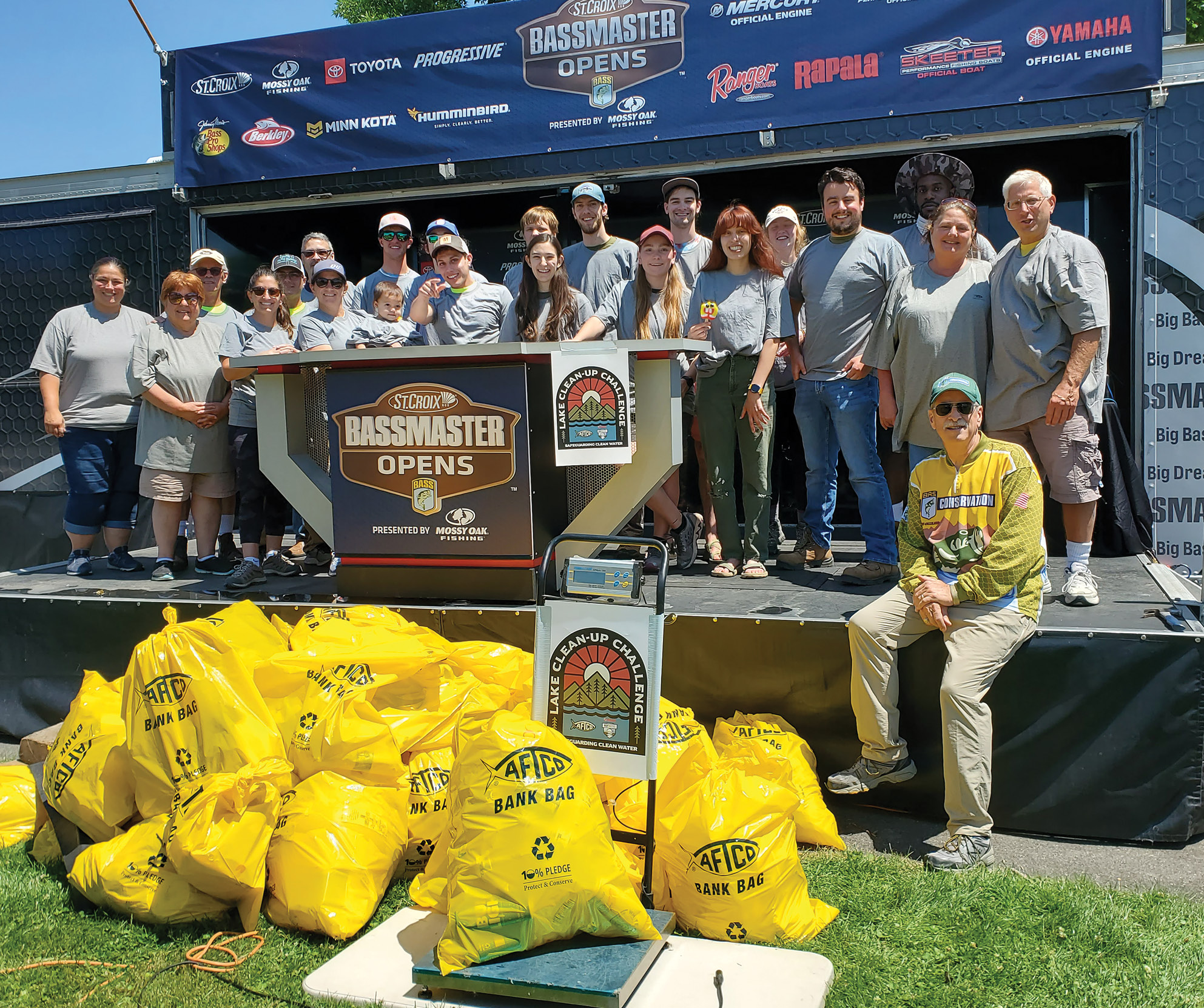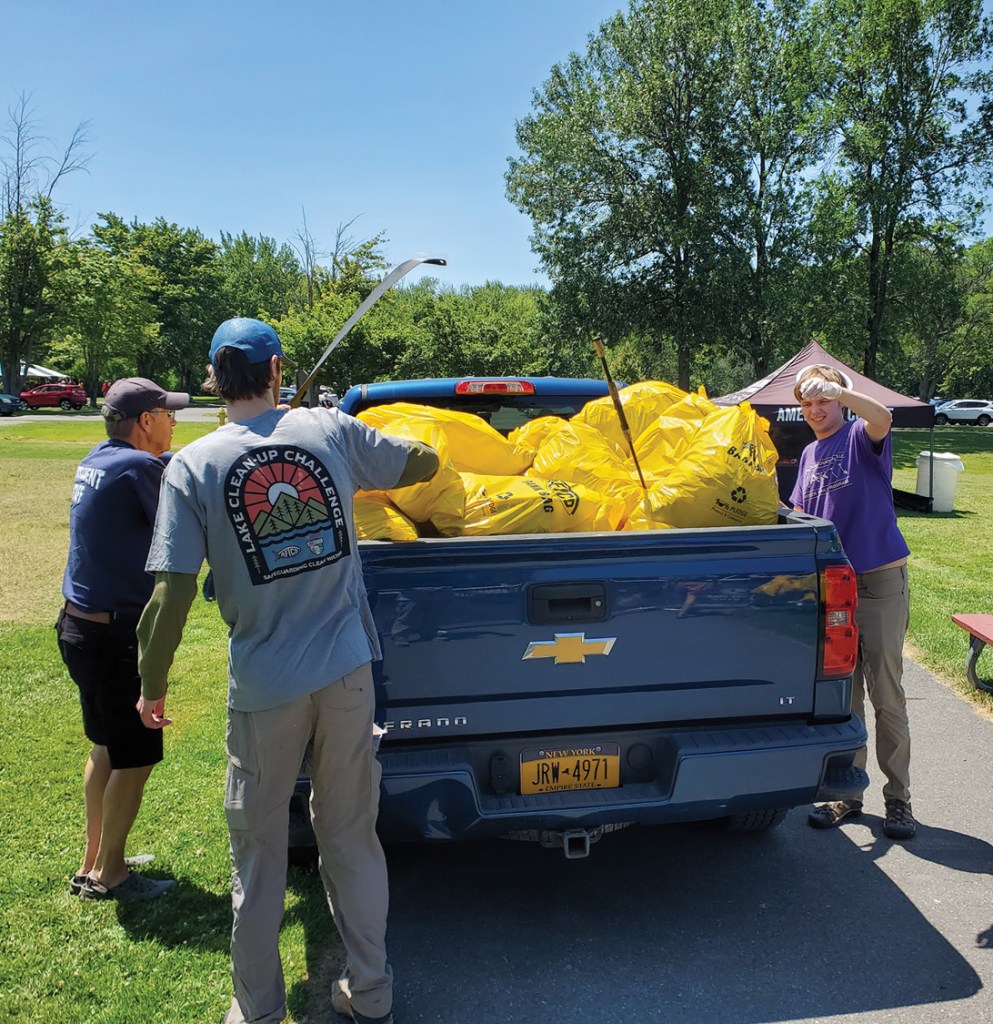
If enthusiasm is contagious, the New York B.A.S.S. Nation (NYBN) youth and high school program’s new Environmental Stewardship Initiative (ESI) should be a rousing success.
“We’ve designed our program to touch every aspect [of stewardship],” said Youth Director Chris Misciagna, who developed ESI with Conservation Director Nathan Perrotta and Technical Director Mike Arndt.
All three are passionate about their avowed goal to “change the DNA of fishermen.”
“Our youth program sits at the top of our conservation program. They’re interwoven,” Misciagna continued. “This is a long game for us to reprogram the way people think.”
The way to do that, they believe, is not to just sponsor an occasional habitat or cleanup project, but to implement a comprehensive strategy that pairs bass fishing with awareness and activism for protecting the resource.
Consequently, the ESI consists of five elements: trash cleanups, invasive species mitigation, fish care, community involvement and a climate action plan.
Implementation began July 9 with assistance from AFTCO and Yamaha Rightwaters for a shoreline cleanup primarily on Oneida Lake, but also the Oneida River and Onondaga Lake. Misciagna said the effort achieved its goal of 250 pounds of trash removed but was “under target” with 25 volunteers.
“We didn’t have a preconceived notion of what to expect, and overall we were very happy,” he added. “But this was one of our first big events and we learned some things about complications.”
One of those was timing. The weekend after the Fourth of July is not a good time for a variety of reasons, including celebration fatigue, they realized.
“Also, in the future, we’ll want to get the word out earlier and we’ll want to get more commitment before the event,” Misciagna said.
“And moving forward, we’ll go out beforehand and scout for places that have trash, like you’d scout for deer.”
Perrotta added, “Initiatives like this take time, as we learn and grow with them.”
During the cleanup itself, they were pleased to discover that people don’t seem to be dumping tires into waterways nearly as much as they used to.

“When I was younger, we pulled out lots of tires and other large stuff,” Arndt said. “We didn’t do that this time. This was a cool testament for a 10-year span. We’re going in the right direction.”
Meanwhile, invasive species projects still are in the planning stages, with the problematic water chestnut a focal point. Onondaga County Soil and Water Conservation District likely will be a partner for teaching young anglers, and getting a steam washer for boats and trailers to every event is a goal.
“This is not a matter of getting rid of an invasive,” Arndt said. “It’s about preventing the spread with Clean, Drain and Dry.”
In regard to fish care, Misciagna said, “We’ve all been ‘fizzed’ by Barb.”
Arguably one NYBN’s most famous members, Barb Elliott has been teaching pros and amateurs alike about barotrauma and how to treat it for years.
She’s also shared her knowledge and skills in numerous videos and articles.
“People won’t fizz their fish if you don’t make them do it. They’re just afraid,” the youth director said. “What we’d like to do is show the kids how this works and let them do it. We plan to let them take over fish care on the NYBN live-
release boat.”
For community involvement, young B.A.S.S. members will help with derbies and teaching other children to fish.
Finally, the climate action plan is all about sustainability, according to Perrotta.
“We want to evolve the conservation program around the three pillars of economics, environment and social interaction,” he said. “We want to get our youth and youth outside our community involved. We want them to see that nature is beautiful and awesome and worth fighting for and protecting.”
A primary goal of this part of the initiative is to make tournaments carbon neutral.
“We want to get kids out fishing, and with bass fishing, that takes a lot of gasoline,” he added.
With that in mind, “each tournament, we will calculate the carbon footprint [carbon dioxide emissions] from the truck drive from home to the launch and back,” the ESI explains. “We will be calculating the carbon footprint from the boat usage during the tournament as well.”
The goal is to calculate how much fuel is used in a tournament and, from that, determine the overall carbon footprint using U.S. Environmental Protection Agency resources. Then NYBN will work with organizations such as Ducks Unlimited, The Nature Conservancy and the Finger Lakes Climate Fund to offset the carbon expelled by doing projects such as planting trees or wetland plants, which absorb carbon dioxide.
“We know there’s an impact. We understand the science,” Perrotta said. “We want to help organizations offset that.”
“With this initiative, we want to expand to people outside the fishing world. We want to bridge gaps and get different demographics involved,” Arndt concluded.
The five-point program can be a blueprint for other state B.A.S.S. Nation youth and adult organizations.





